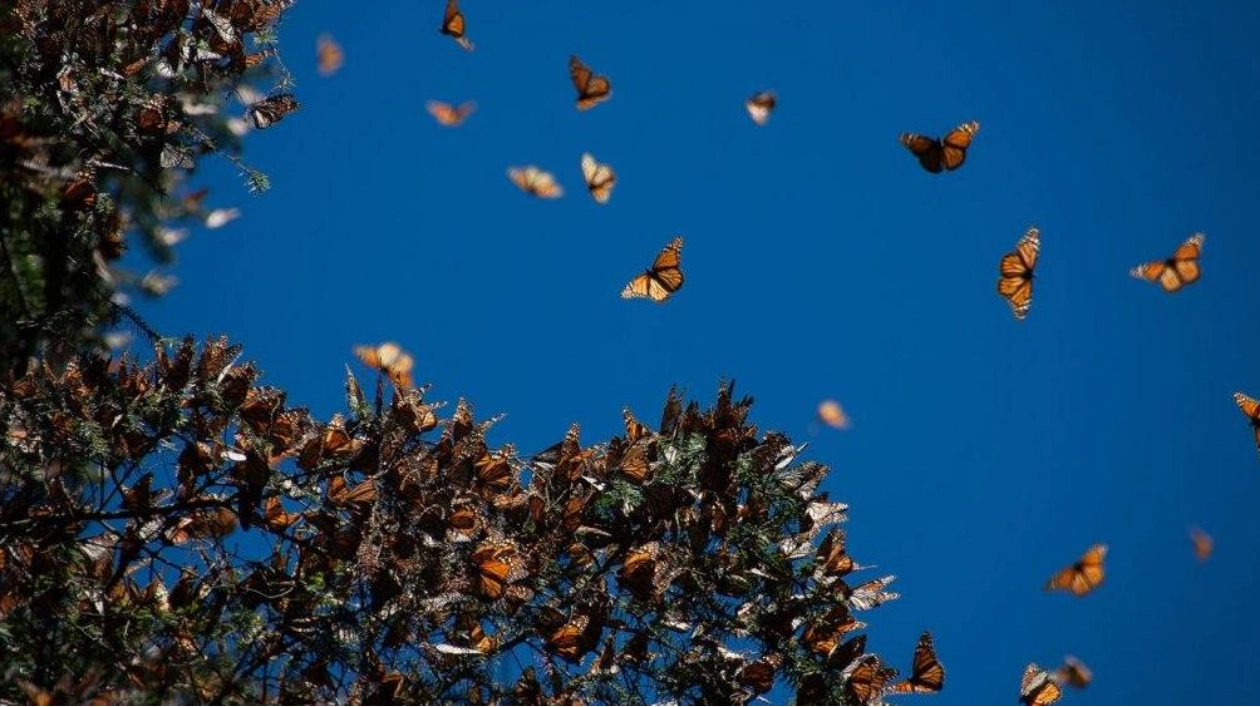An initiative to cultivate new forests in central Mexico brings hope that the vital winter habitat for millions of migrating monarch butterflies may endure into the next century. When researchers decided to plant hundreds of young oyamel fir trees (Abies religiosa) approximately 100 kilometers from their natural habitat, they were uncertain about the survival rate. As of September 17, researchers report in Frontiers in Forests and Global Change that most saplings are thriving, even at an altitude of 3,800 meters, significantly higher than their usual growing range. Nearly 70 percent of the saplings have survived for at least three years.
While transplanting an entire forest might seem extreme, "desperate times call for desperate measures," says Karen Oberhauser, a conservation biologist at the University of Wisconsin–Madison, who was not involved in the study. "If we don’t assist organisms in relocating, we risk losing many ecosystems."
Each autumn, monarchs (Danaus plexippus) migrate from the milkweed-rich meadows of southern Canada to the mountains of central Mexico, where they hibernate exclusively on oyamel fir trees. These forests, and the butterflies that rely on them, face significant threats. Monarch populations are declining, and climate change forecasts suggest that oyamel fir could nearly disappear by 2090.
"I know this sounds unconventional, but we need to move the forests to higher elevations," says Cuauhtémoc Sáenz-Romero, a forest geneticist at Universidad Michoacana de San Nicolás de Hidalgo in Morelia, Mexico. Oyamel fir, which typically grow between 2,400 and 3,500 meters, require cold mountain air to survive. This cold environment also helps slow the metabolism of butterflies, enabling them to endure the winter. As central Mexico warms, new generations of oyamel fir may need to climb higher up their native slopes, potentially running out of suitable terrain.
Sáenz-Romero aims to relocate the trees to taller mountains, recognizing that they won’t migrate on their own. His team collected oyamel fir seeds from elevations between 3,100 and 3,500 meters within the Monarch Butterfly Biosphere Reserve in Michoacán state and nurtured them in a tree nursery. Subsequently, in collaboration with the Indigenous community in Calimaya, they planted around 960 trees at various elevations on the Nevado de Toluca volcano.
While some seedlings were planted at 3,400 meters—similar to the typical oyamel fir within the butterfly preserve—Sáenz-Romero sought to test the limits of altitude tolerance. Other trees were planted at higher, colder climates, at 3,600, 3,800, and 4,000 meters above sea level. If the fir trees can establish themselves at these higher-than-normal elevations, they might flourish there as temperatures rise.
Three years after planting, the team found that young fir trees were smaller and shorter at higher altitudes on Nevado de Toluca. However, many survived their first year, a promising indicator of long-term viability. On average, 80 percent of the seedlings moved to locations 2.3 degrees Celsius colder than their native regions survived for at least three years.
Implementing this experiment on a larger scale would face numerous challenges, including securing community and government support. Even if the trees survive in the long term, another question remains: Will monarch butterflies find them? During the winter of 2023–2024, some large monarch colonies did not hibernate within the borders of the Monarch Butterfly Biosphere Reserve, instead seeking out other forests. "My guess is that monarchs are already looking for colder places," Sáenz-Romero notes.






